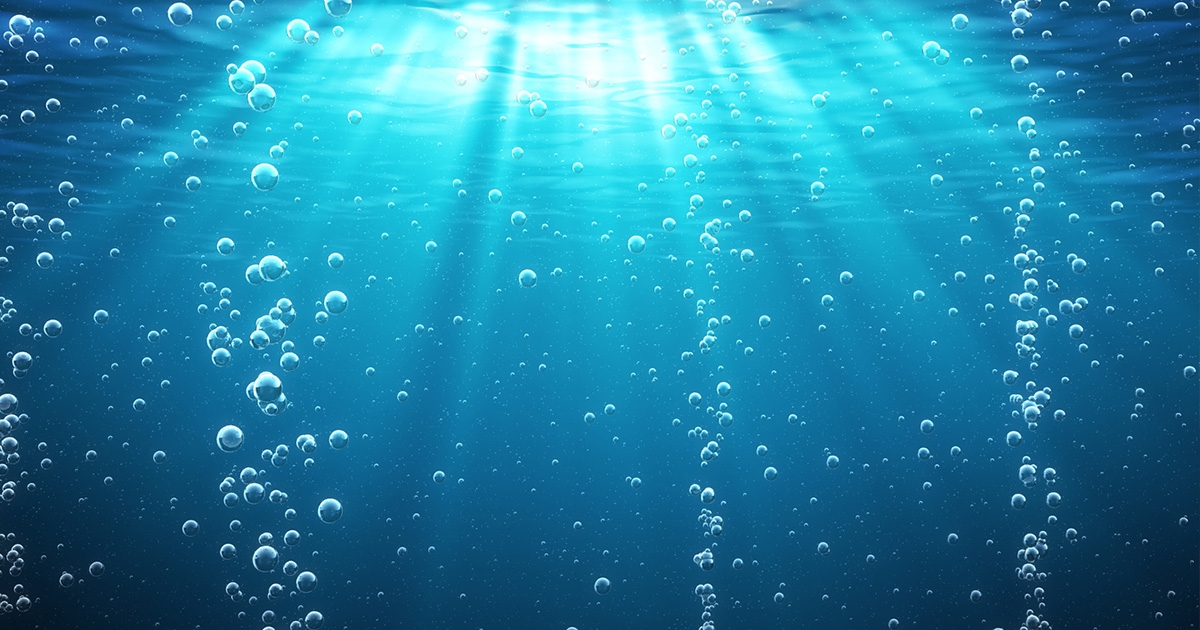Re-Oxygenating the Oceans Through Offshore Hydrogen Production

Lhyfe, one of the world’s pioneers in green and renewable hydrogen production, has completed a first step in its work on ocean re-oxygenation with the publication, by IRD Brest, of a first scientific article on the results of the research carried out in recent months.
Right from 2017, when Lhyfe was still in early development, the founding team led by Matthieu Guesné had a clear ambition: to massively decarbonize transport and industry by producing and supplying renewable hydrogen, while at the same time helping to re-oxygenate the oceans. But how?
The team imagined a completely climate-friendly process with a double impact:
- On the one hand, it would produce hydrogen at sea (using seawater and wind energy) to decarbonize uses that emit high levels of CO2, such as heavy vehicles (e.g. trucks, buses, waste collection vehicles, etc.) and industry (e.g. chemicals, metals, glass, steel, etc.).
- On the other, it would re-inject the oxygen by-product from the electrolysis of water into aquatic environments – which due to global warming and polluting industrial activities are increasingly depleted of oxygen – in order to re-oxygenate them.
 Lhyfe’s production of offshore hydrogen is progressing step by step. It launched the production of renewable green hydrogen with Sealhyfe (a pilot plant capable of producing up to 400 kilos of hydrogen a day off the Atlantic coast, installed at sea in the second half of 2022), and announced the HOPE project (HOPE stands for Hydrogen Offshore Production for Europe), which will produce up to four tonnes of offshore hydrogen a day, off Ostend in Belgium, by 2026. In parallel, the company is conducting research into ocean re-oxygenation and hopes to one day realise this project, in conjunction with the deployment of future offshore production platforms.
Lhyfe’s production of offshore hydrogen is progressing step by step. It launched the production of renewable green hydrogen with Sealhyfe (a pilot plant capable of producing up to 400 kilos of hydrogen a day off the Atlantic coast, installed at sea in the second half of 2022), and announced the HOPE project (HOPE stands for Hydrogen Offshore Production for Europe), which will produce up to four tonnes of offshore hydrogen a day, off Ostend in Belgium, by 2026. In parallel, the company is conducting research into ocean re-oxygenation and hopes to one day realise this project, in conjunction with the deployment of future offshore production platforms.
Lhyfe began working, back in June 2020, with a number of research organizations, such as the Institute of Research for Development (IRD) in Brest. Lhyfe financed all the work involved in this project, and commissioned some of its experts, including offshore project manager Stéphane Le Berre, to help move this research forward. The Physical Oceanographer Dr. Patricia Handmann has been in charge of this work since June 2022.
The published article – available here in full - discusses:
- The role of oxygen in aquatic environments;
- How the production of renewable green hydrogen produces oxygen as a by-product;
- The contents of the research carried out by the physical and biogeochemical ocean modelling experts of IRD Brest;
- The results of the research, which revealed highly contrasting regional oxygen inventory responses, highlighting the extent to which the large-scale industrial artificial re-oxygenation of oceans could have an impact on Oxygen Minimum Zones (OMZ)worldwide, and must be treated with extreme caution.
Based on these initial results, Lhyfe is initiating a series of next steps in order to take the necessary precautions when approaching this issue.
Patricia Handmann, Oxygenation Advisor at Lhyfe: “Ocean deoxygenation is a major issue for our planet, which deserves our full attention. To see a young company like Lhyfe dedicating resources to exploring the potential for providing ecosystem services is a profoundly inspiring example for our society. This first work is very encouraging, and with our partners, we will be pursuing it in the coming months, rigorously and responsibly. We now aim to build an adequate scientific, legal and technological basis, which will pave the way for the effective implementation of ocean re-oxygenation at our future offshore green hydrogen production sites.”

